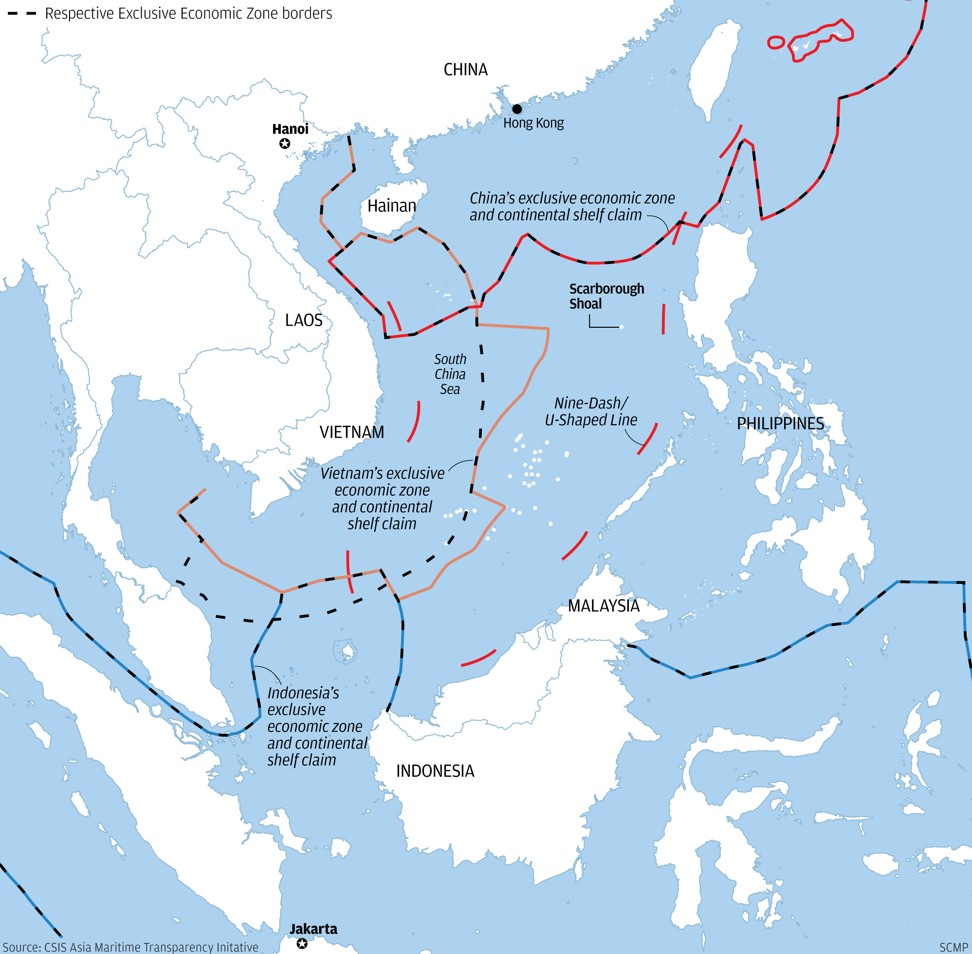
US flexes military muscle in South China Sea with nuclear aircraft carrier port call in the Philippines
- Washington and Manila use visit to bang drum for community and military ties
- Analyst expects stopover to prompt show of military might from Beijing

The United States has sent its nuclear-powered aircraft carrier Ronald Reagan to the Philippines to show its commitment to an ally and in a display of military might aimed at checking China’s expansion in the South China Sea.
The Ronald Reagan and its battle group – about 7,500 personnel, two guided missile cruisers, a squadron of at least two destroyers or frigates and a complement of 65-70 aircraft – arrived in Manila on Wednesday.
The American port call highlighted “the strong community and military connections between the Philippines and the United States”, the US Navy said.
Sung Yong Kim, US ambassador to the Philippines, said the stopover showed Washington’s strong commitment to the Indo-Pacific region.
“This visit is a great representation of our strong friendship, partnership and alliance with the Philippines, as well as a testament to our joint commitment to a free and open Indo-Pacific region,” he said.
The US and the Philippines signed a mutual defence treaty in 1951.
China and the Philippines, among other countries, are in dispute over Beijing’s “nine-dash line” claim on what it says are its historic rights in the South China Sea.
China has also built artificial islands, reclaimed land and installed airstrips and military equipment in the waters, raising accusations that Beijing is militarising the waters.
Washington is not a claimant in the waters but it has pushed its Indo-Pacific strategy to contain China’s military expansion in the Pacific and Indian oceans.
The strategy is a combination of military and geoeconomic policies meant to provide alternative development models to curb Beijing’s flagship Belt and Road Initiative.
As the US flexed its muscles in the Philippines, Defence Secretary Mark Esper was talking to the leaders of nations prominent in the China containment strategy: Australia, New Zealand, Japan and South Korea.
An analyst said Southeast Asian countries wanted stronger engagement of the US forces in the region to counterbalance China’s presence.
“It’s still evident that most, if not all, Southeast Asian countries regard the US as a primary stabilising force, especially in the current context of uncertainties – not least surrounding China’s growing military might, ambiguous intent and evident proclivity towards using coercion,” said Collin Koh, a research fellow at the S. Rajaratnam School of International Studies at Nanyang Technological University in Singapore.
Koh said officials in Beijing would see the Ronald Reagan port call in Manila as a serious threat and China would flex its muscles in response.
“A US Navy carrier strike group as a whole, not merely the carrier itself, is a formidable fighting machine afloat and could in theory seriously threaten Chinese interests in the South China Sea, not least considering that the far-flung outposts in the Spratly [Islands] are exposed, vulnerable and prone to being cut off from the mainland,” he said.
Rajeev Ranjan Chaturvedy, a visiting fellow at the S. Rajaratnam School of International Studies, said the visit and related activities were a part of US naval diplomacy and freedom of navigation operations.
“This is also a reflection of US reassurance to its partners,” he said.
“More importantly, this also conveys a message that the US Navy is free to operate in international waters.
“Geoeconomic and geopolitical landscapes are changing.
“There is intense and growing rivalry … A US strong presence is seen by many [Southeast Asian nations] as a balancer. It is also seen critical for regional security and stability .”